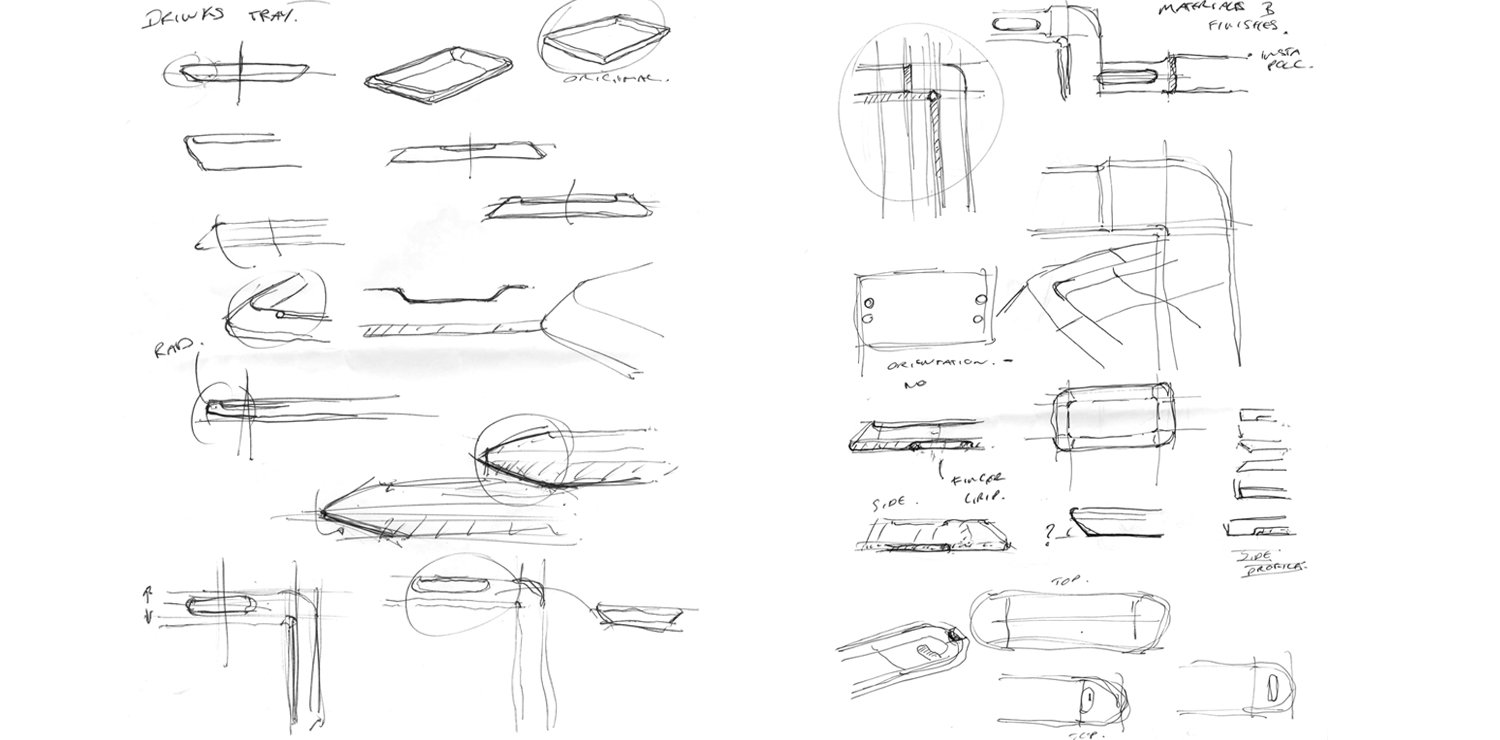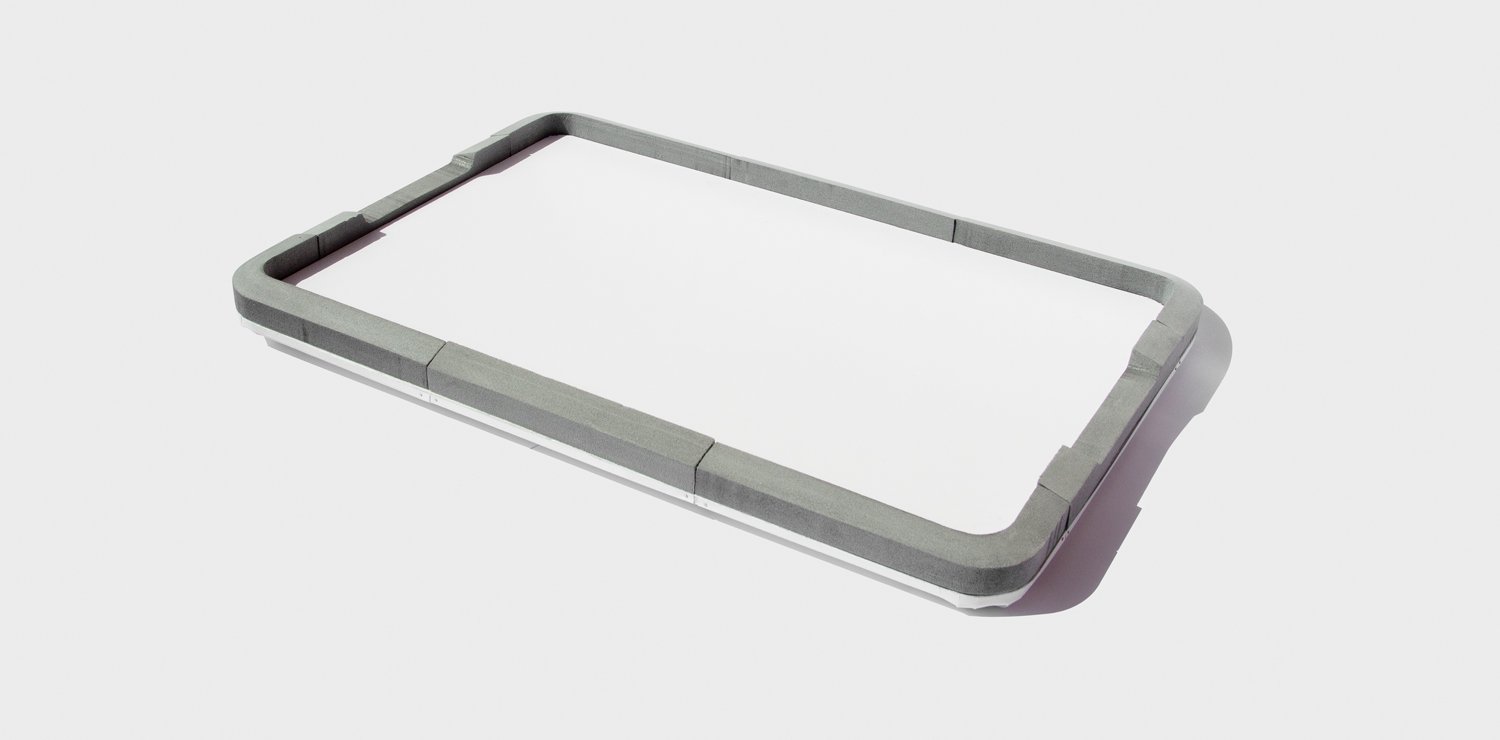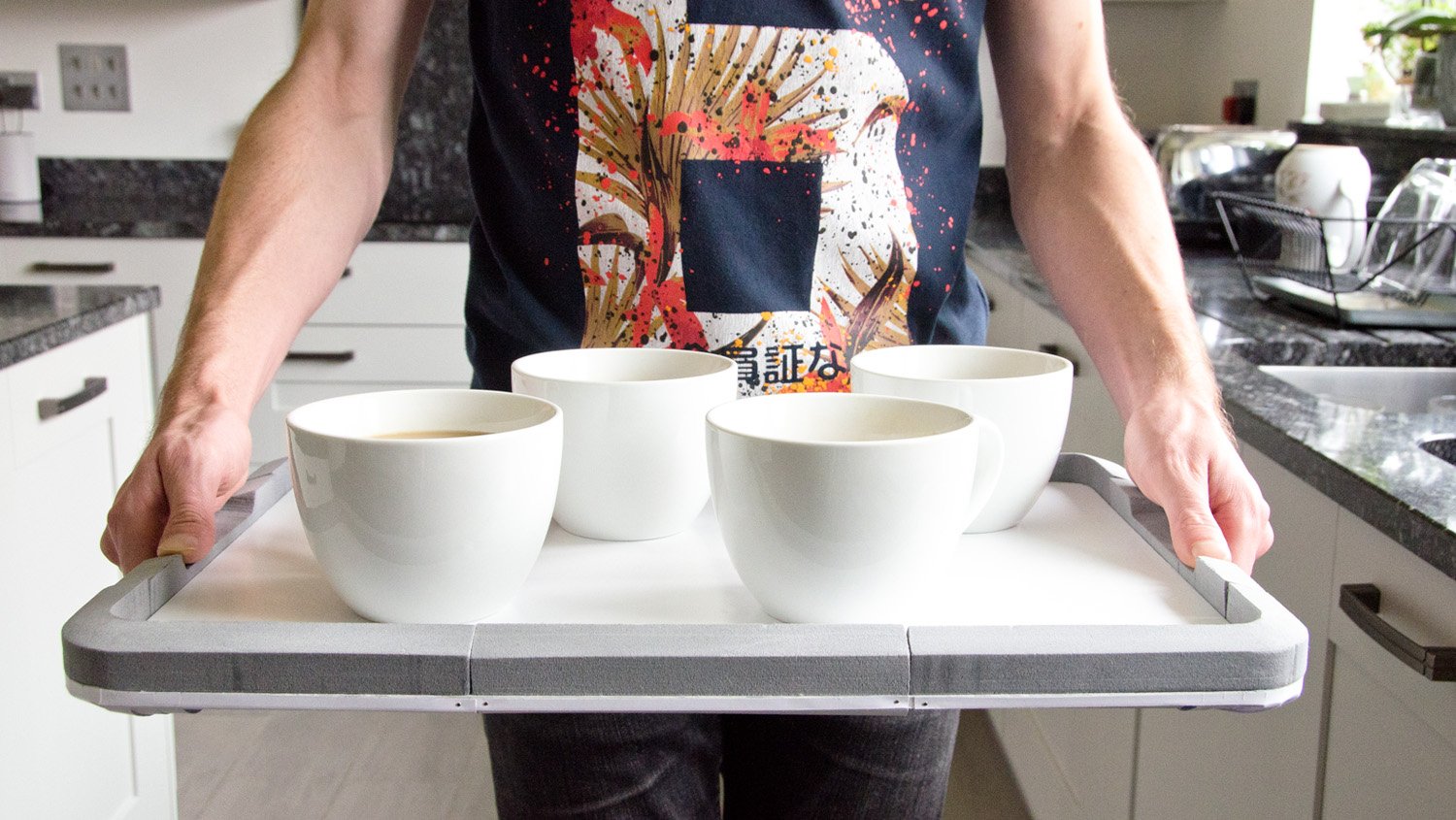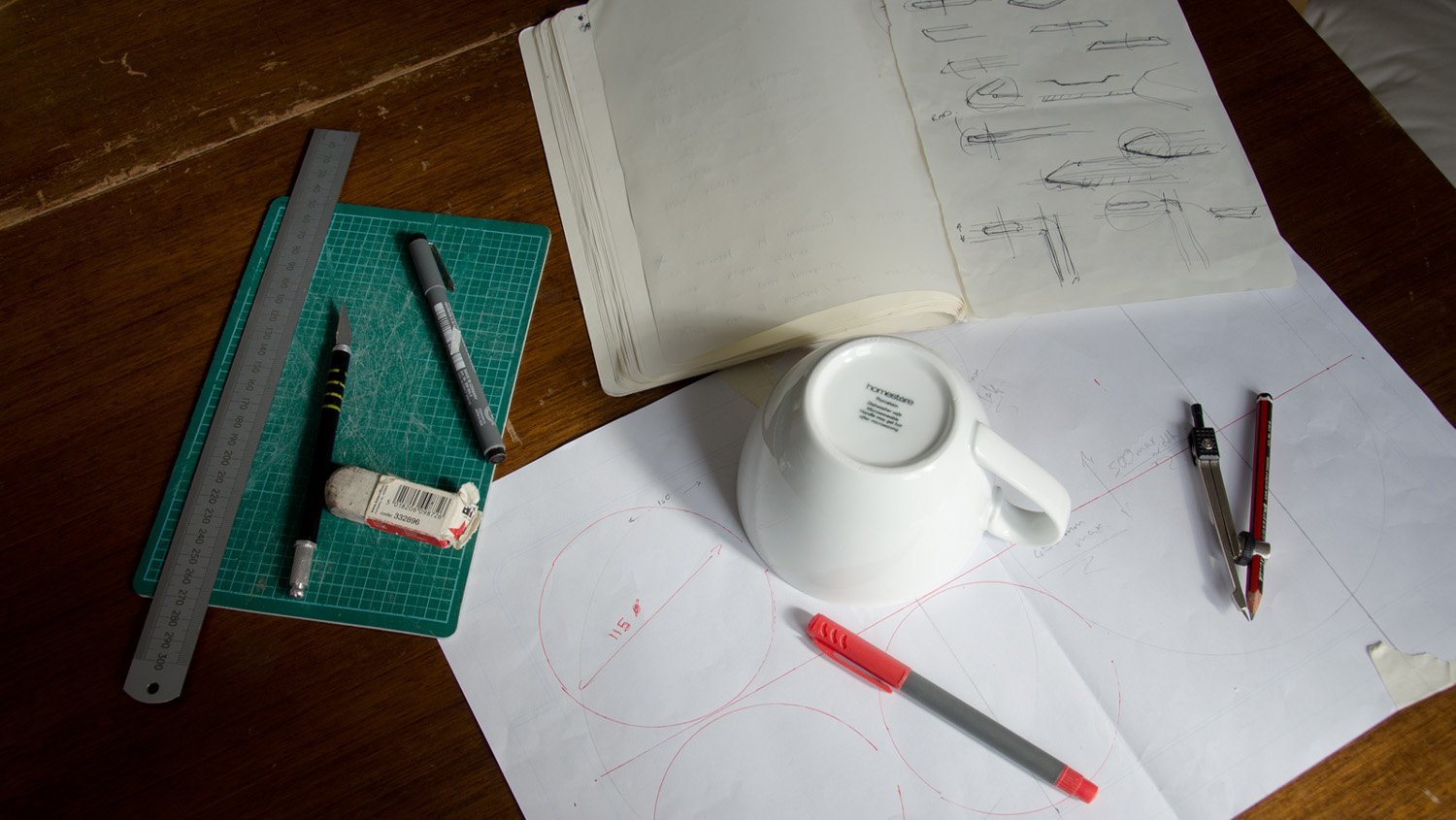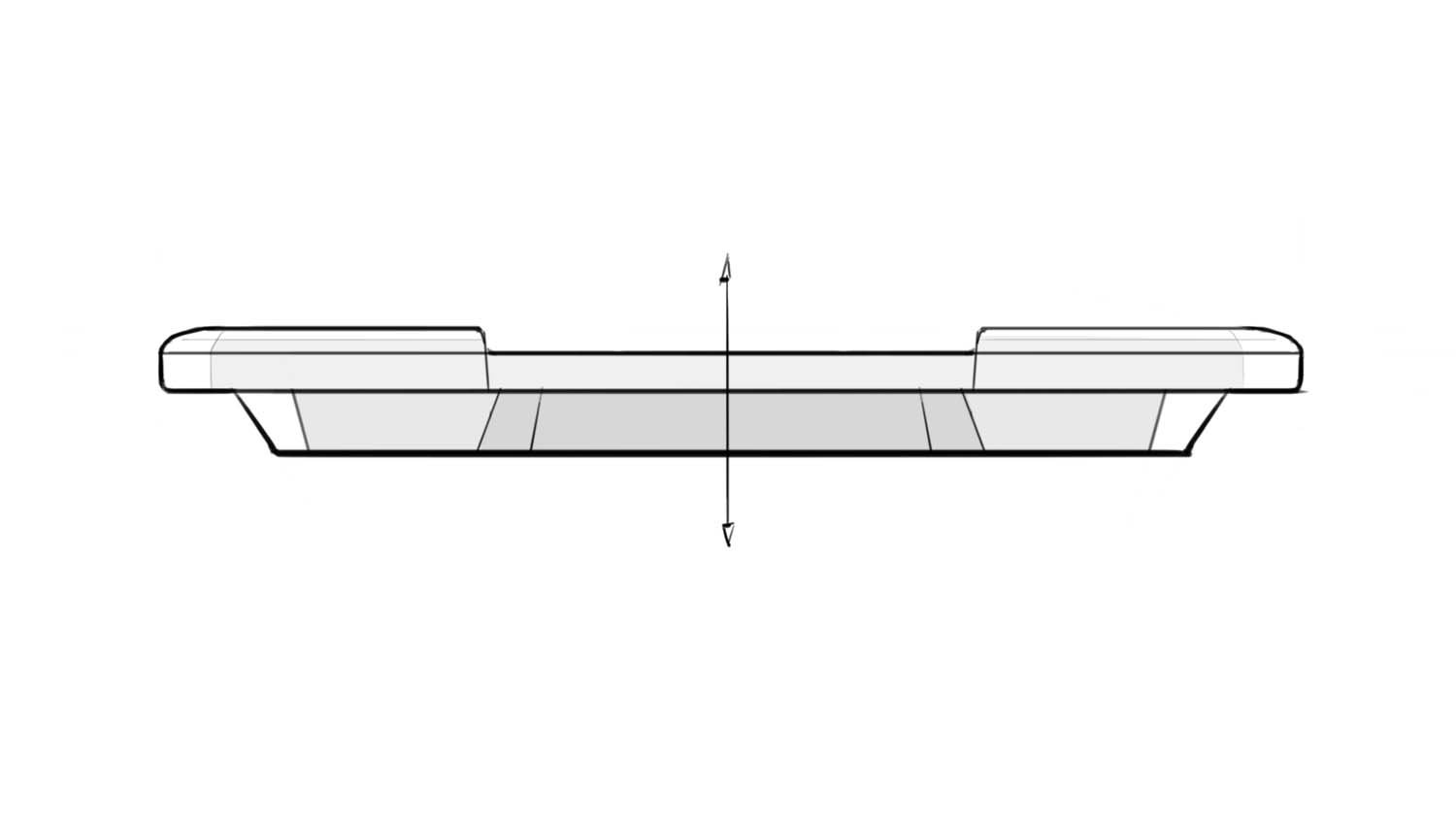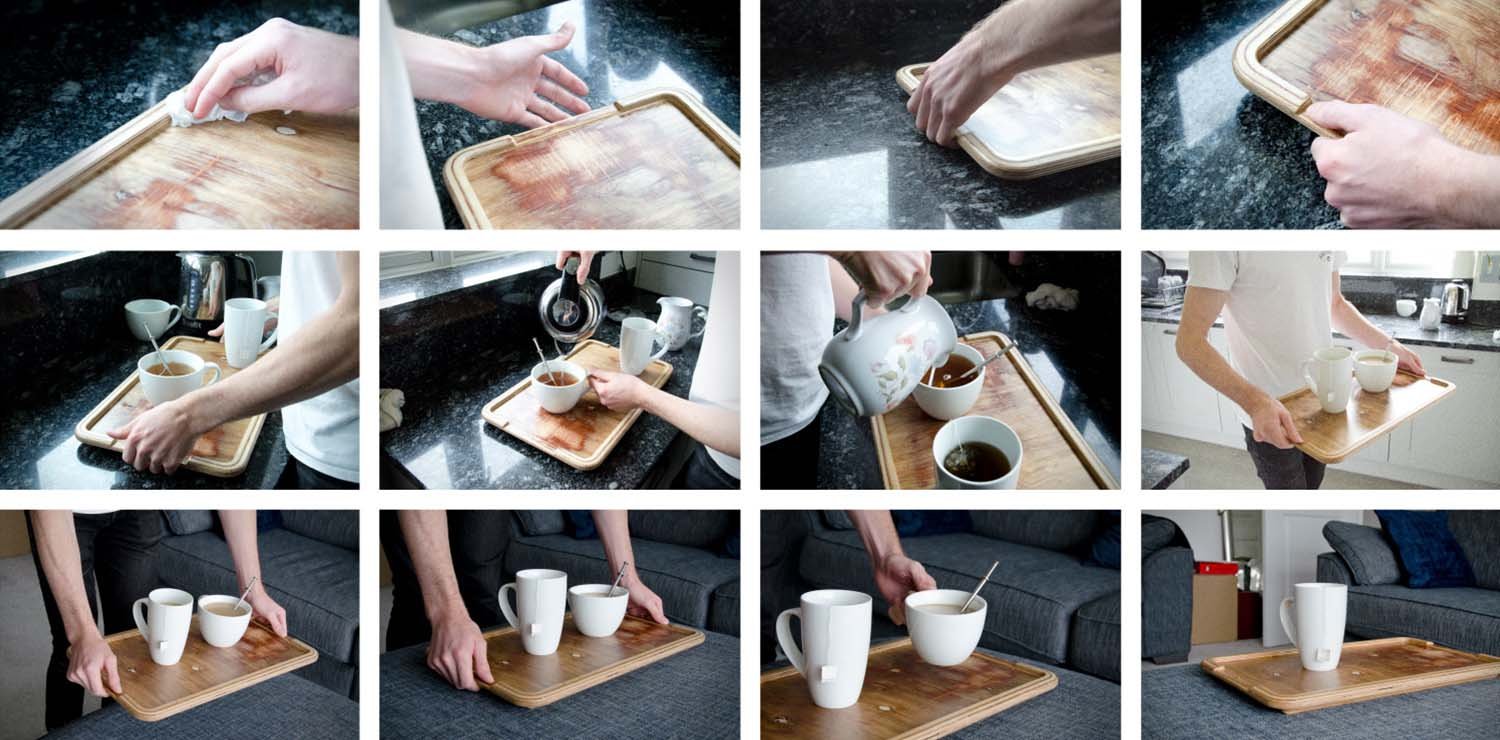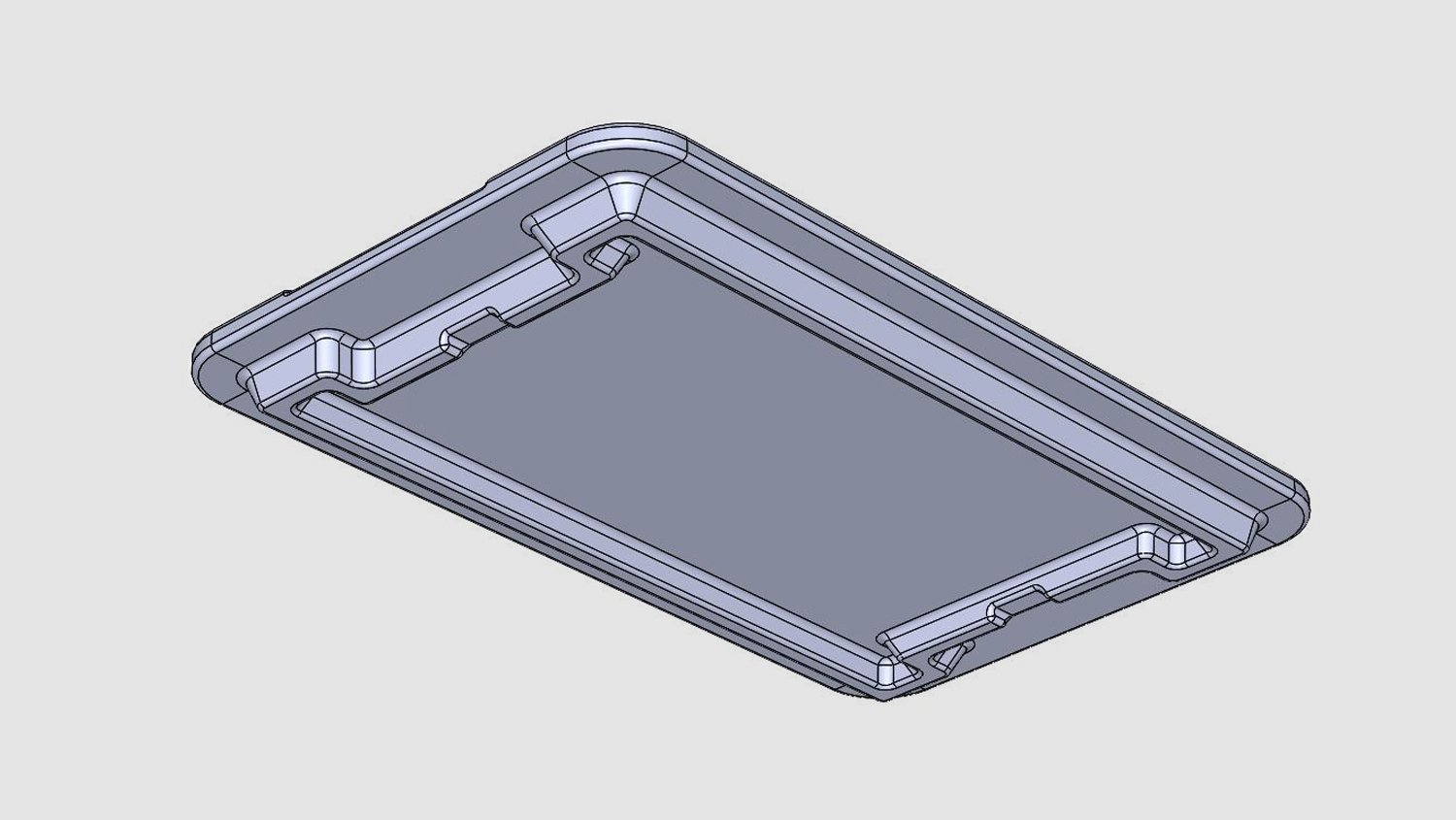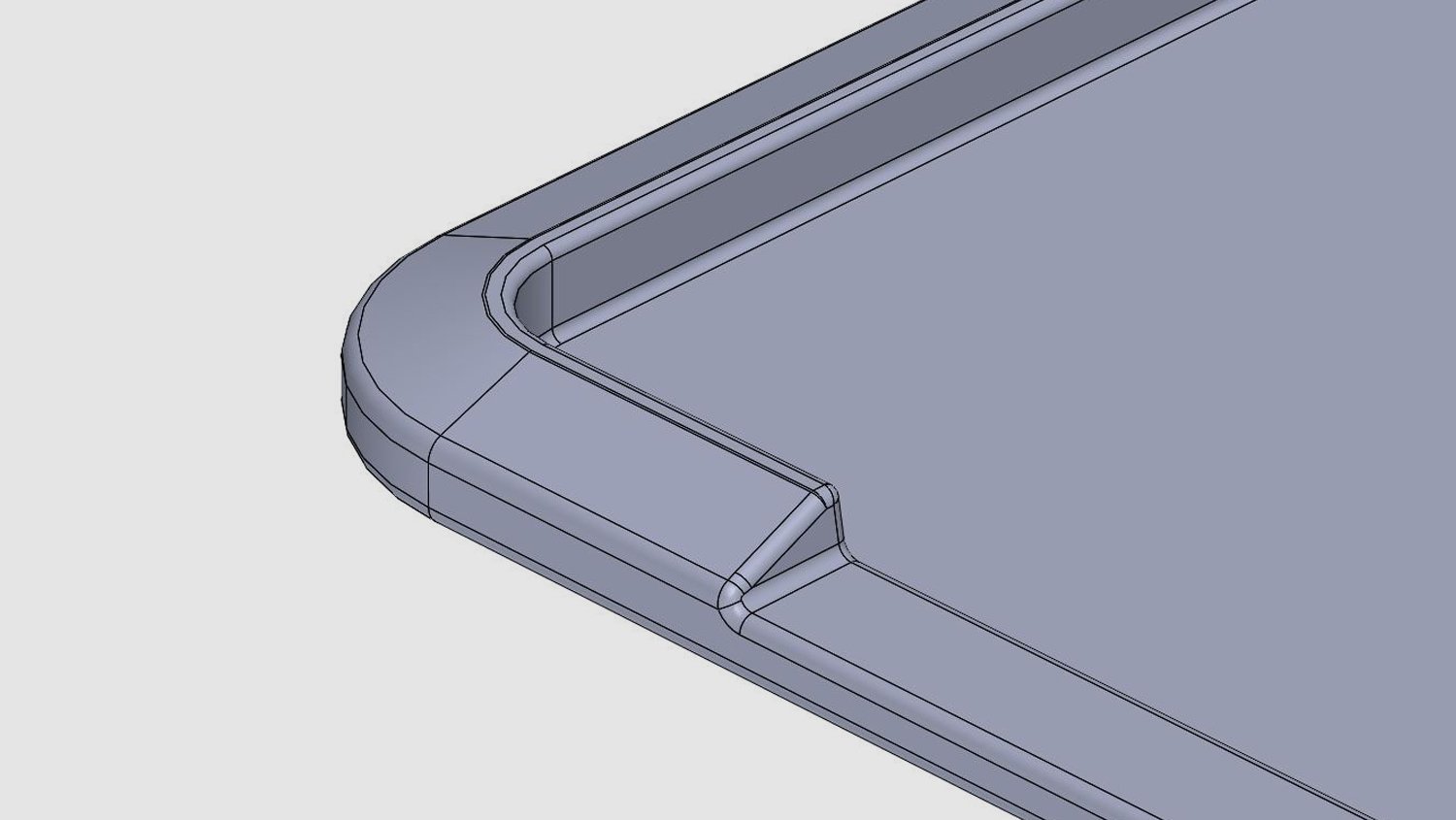
Serving Hope
A serving tray born out of lockdown.
With everyone spending more time indoors, I began to look at everyday objects with a different perspective. I started questioning why we own them and what purpose they serve. Could it be that we form subconscious bonds with certain objects, making it difficult to let go? Is this the reason why everyone seems to accumulate so much 'stuff'? Personally, I have always advocated for owning less but choosing quality.
The pandemic has profoundly shaken the world, causing everything to feel like a blur from one day to the next. Many find it hard to recall what life was like before.
Wouldn't it be nice to design an object that symbolizes hope for better times ahead? Something that brings people together and encourages conversation.
After all, there's always time for a cup of tea, right?
Inspiration
After examining a few examples, I became fascinated with various styles of wooden serving trays, in particular. Some of the designs featured softer forms, utilizing the material's properties during production, while others were created through cutting and joining with hard edges. I also started studying grain patterns, mixed materials, textures, and finishes
Ideation
Small thumbnail sketches to explore initial concepts focusing on different edge profiles and shape variations.
Sketch Development
I was keen to explore the chamfered edge detail which follows the outside of the tray. I like the way the chamfer is intercepted by the slot cut to form a handle profile. This simple design detail aligned nicely with the principles pulled from the moodboard.
Foam Modelling
It was important to prove out some of the design features and concepts as early as possible. Insights gained from this early prototyping phase could be fed back into the design process. I decided to move with the rectangular footprint rather than the slot shape to maximise the area on the tray. The blue foam model helped me to judge the design more accurately and understand the proportions better in 3-D space.
Chamfer Detail
A slot cut through the edge chamfer created a unique handle slot detail which provides a suitable area for purchase.
Clean & Simple Details
I was focusing on clean lines and forms which would also aid functionality.
Tapered Base
A feature introduced to aid lifting from surfaces.
V1 Prototype Assessment
The tapered base wasn’t providing any added functionality and there wasn’t enough room to fit your fingers underneath. The chamfer detail around the edge was far too cumbersome and the handle profile had to be adjusted and softened for comfort. The overall size of the tray also had to be adjusted to accommodate small side plates.
Design Refinement
Comfort - Edges softened with radii. Handle profile angled at edges.
Function - Base taper starts higher creating more room for purchase.
Detail - Chamfer thickness reduced around edge.
Prototype Development
V2 Prototype Assessment
A mixture of modelling foam, foam core and paper helped me to produce the next prototype. It was important that the tray could withstand a reasonable amount of testing to gain further insights.
Learnings & Testing
A collection of images which detail some of the learning outcomes from user testing.
Overall, the design refinements hadn’t performed as expected. Although, It was obvious there were some elements which worked well there were also several areas which still needed adjustment.
Proportions
Tray could easily accommodate six large mugs or two small side plates.
Stability
Tray had a tendency to tilt during use. Mugs had to be positioned in certain areas of the tray to maintain stability.
Comfort
Tapered base didn’t provide adequate purchase and felt unnatural to hold.
Manufacturability
Whilst the overall design of the tray still needed work, there were a few questions regarding manufacturability which needed to be taken into consideration.
Proposed Method
The design was also going to pose a few challenges when it came to manufacturing. Using solid wood edging and bonding pieces together with veneer sheet seemed to be the most cost effective approach but wasn’t appropriate for production.
Conclusion
This approach works against the principles and inspiration outlined at the beginning of the project. I wanted to work with the material rather than against it. Unfortunately, it was time to go back to the drawing board.
Improved Design
I was able to refine the design and adjust some of the features through the insights and learnings gained from user testing. The improved design includes larger radius details and finessed profiles which provide an overall softer aesthetic. I have also considered some of the manufacturing challenges adapting the design to suit so that the tray can be produced from one piece of solid material.
Prototype Development
V3 Prototype Assessment
A softer overall look and feel for the birch ply version 3. The birch ply also provided a good indication for the weight of the final product. Perhaps the details were too soft and the definition in the form had been lost a little
Learnings & Testing
Proportions
Chamfer detail adjusted to aid functionality.
Softened Edges
Radii increased and recess introduced for increased stability and added comfort.
Base
The large surface area and weight caused the base to stick to the surface. Particularly when the surface underneath is perfectly flat like a granite top.
Design Refinement
Handle Area Adjustment
Subtle changes to distances between surface levels to aid functionality.
Reducing weight and Preventing Stick
Introducing a pocket detail in the base area to reduce weight. Notches were also added to the edge detail preventing the tray from sticking to flat surfaces.
Increasing Contrast and Definition
Decreasing the size of the radius edges helped to bring back some of the lost details.
Final Design
A serving tray which carefully blends form with function to create a stylish and contemporary object which is a joy to use around the home. A visually stunning piece, machined and hand finished from a solid piece of American dark walnut for a premium look and elegant feel.
Disclaimer: The work is shown for personal portfolio presentation purposes only and must not be shared by any third parties.


